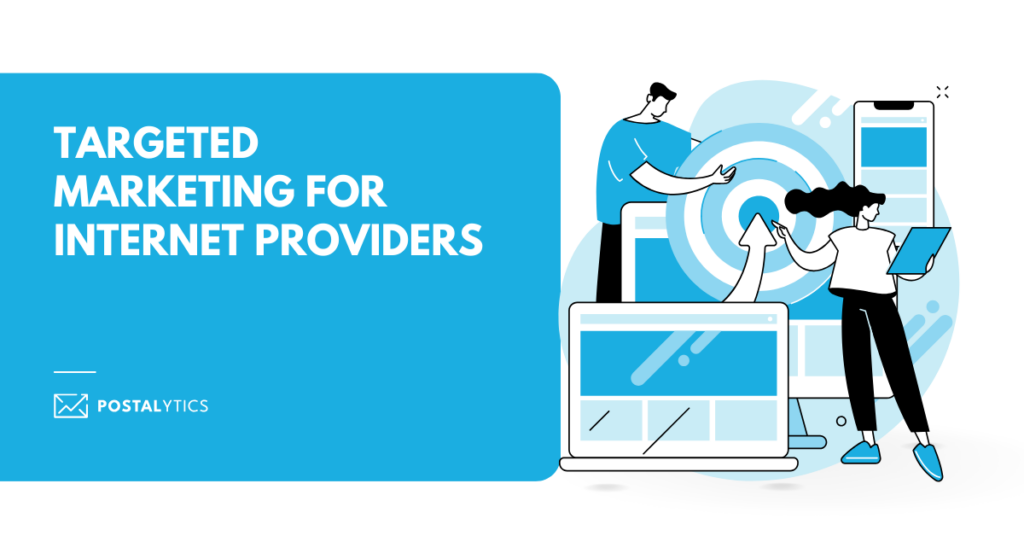
“If you’re selling to everyone, you’re selling to no one,” is an age-old adage that holds true to this day.
If your campaigns are underperforming, the reason could be improper targeting. Instead of sending direct mails or emails to everyone in your audience list, it’s time you implemented targeted marketing.
With this strategy, you can drive successful results and increase customer satisfaction – 40% of consumers prefer targeted ads over general irrelevant ads.
In this guide, we’ll explore different targeted marketing strategies for internet providers. We’ll also discuss the tools you can use to implement them. Let’s dive in!
What We’ll Cover:
Understanding Targeted Marketing
Targeted marketing involves analyzing data about your audience. These data points include their demographics, needs, interests, and motivations. With this, you can focus your marketing budget and message on particular segments most likely to interact with that campaign.
With marketers collecting audience data at every touchpoint, consumers expect personalization based on this data.
For example, before subscribing to a free trial, many SaaS companies ask you for details about your business. Say you entered “IT business” and company size as “50” for a project management tool. Next, you’ll start receiving targeted marketing related to your input.
The idea behind adopting a targeted marketing strategy is that you can spend far fewer resources (time, energy, and money) to get more ROI.
Here’s an example of what it would look like:
Untargeted Campaign: Emails sent to 1000 people. 1% conversion rate. 10 leads.
Targeted campaign: Personalized emails sent to 500 people. 5% conversion rate. 25 leads.
The Power of Targeted Marketing for Internet Providers
Targeted marketing helps internet providers build a real connection with their audience. Here are the four main benefits of adopting these strategies:
- Cost-effectiveness: Instead of sending direct mail or creating ads for all demographics, you can target a specific audience and get better results. Targeting helps you save on costs.
- Better connections: With targeted marketing, you create personalized content relevant to your audience. This strategy builds better connections, and you can even target people in rural areas for your internet services.
- Better engagement: Sending emails or creating social media campaigns is no longer enough. In a competitive scenario where hundreds of internet service providers are fighting for the same audience, you need targeted marketing to give you that edge and find better ways to engage your target audience.
- Higher ROI: Well-made campaigns and focused marketing efforts directed toward the right segments can increase your ROI.
Platforms and Tools for Effective Targeted Marketing
Segmentation is resource-heavy. It involves curating detailed lists, customer preferences and other data into a single platform. From there, you need to select relevant audiences and create laser-focused content.
That’s why many internet service providers adopt different tools to manage everything. Having a single platform to collect all your data and create campaigns with readymade templates frees up time and resources. In the end, you can see an increase in ROI, customer acquisition, and retention.
#1 Direct Marketing Platforms
Direct marketing involves sending a physical marketing mail piece to your clients or prospects. With creating, sending and tracking direct mail becoming as easy as email campaigns, many businesses are adopting this method to cut through the noise.
You can create direct mail campaigns for attracting and nurturing leads, sending purchase reminders, retargeting, sending newsletters, and retaining customers.
Many direct mail automation platforms like Postalytics provide different personalization options for targeted marketing.
For example, you can showcase different images on your postcards depending on the changing plans and localities you’re targeting. You can even use our Variable data and Variable logic feature to create as many customizations as possible.
![[POSTALYTICS] Targeted Marketing for Internet Providers](https://www.postalytics.com/wp-content/uploads/2023/10/POSTALYTICS-Targeted-Marketing-for-Internet-Providers.jpg)
As an internet service provider, you can create triggered drip campaigns to send the right mails at the right time and improve your chances of conversion.
Best direct marketing platforms: Postalytics
#2 Customer Relationship Management (CRM) Systems
A CRM tool helps businesses manage and organize customer data and relationships on a centralized platform. Whether you want to gather all your customer data, track and analyze a deal, capture more leads, or manage all customer interactions in one place, CRM helps you do that.
Tools like HubSpot CRM provide the functionality of giving your team a centralized view of every customer interaction. For example, if you want to see the last interaction your colleague had with a customer, you don’t have to call or email them. You can see the last message in this centralized inbox.
Postalytics has built a HubSpot integration for direct mail automation, enabling you to automate, track, and integrate direct mail seamlessly into your multi-channel campaigns.
Most CRM tools integrate with your other marketing tools so you can easily import lists, create personalized content, and schedule campaigns. This is very beneficial if you already use other tools to manage your internet service campaigns.
Best CRM Tools: HubSpot, Zoho CRM, SmartTask
#3 Email Marketing Platforms
How many times have you deleted an email before opening it? Many times, right? Conversely, have you received an email you opened immediately because of the personalized subject line?
Well-targeted email campaigns can help you get higher conversions and purchases. You can use data about your customer segments to customize emails. Email marketing platforms let you do that with ease.
For example, Omnisend provides a drag-and-drop email editor. This feature lets you add different elements like unique discount codes, promotions, visual elements, etc.
As an internet service provider, you can segment your customer list by usage and plans used. You can then use these tools to access readymade templates and customize them for different segments.
These tools let you;
- automate email workflows
- trigger campaigns
- use AI features
- get advanced analytics
- view reports on email performance
- perform A/B testing
Best email marketing tools: Mailchimp, Omnisend, SendX
#4 Social Media Advertising Platforms
Social media has become a great platform for businesses to engage with customers. It helps reach a wider audience, and you can create different strategies to build a loyal community.
Facebook, Instagram, and LinkedIn are the most preferred social platforms. Social media ads are a great start when creating a targeted marketing campaign.
For example, Facebook provides lifestyle-based targeting options like income, interests, behaviors, recent purchases, education, job history and major life events. This can help you craft different ads for different segments instead of using a generic copy for everyone.
For your internet service company, you can choose a social platform your users use and find an audience that would likely convert. You can then use social media management tools to create ads, find posts you could boost, and get analytics and reports.
Best social media management tools: Buffer, Hootsuite, Sprout Social
#5 Content Management Systems
A content management system is a tool that allows marketers to build, manage, and customize a website without having to code it from scratch. It allows multiple contributors to create, edit, and publish content.
Apart from content, you can customize the design and functionality of your site by purchasing or downloading different templates and extensions. You can even customize web experiences for different customer segments.
Here’s how WordPress provides plugins that allow you to customize content based on the conditions you set.
Many CMS now offer scheduling features when you integrate them with different tools. For example, if you’re running a campaign to get more clients for your internet services, you can schedule landing pages, web pages, and emails with these platforms.
Best content management systems: WordPress, CMS Hub, Joomla, Magento
#6 Google Ads and PPC Platforms
The companies that are benefiting the most from Pay-Per-Click (PPC) ads are the ones that use segmentation and targeting effectively. The most used PPC platform is Google ads, which have been there for a long time and can help you reach a wider audience.
They have been so effective that many companies use them for advanced strategies such as reinforcement and reminder advertising.
The three major categories of audience targeting in Google ads are:
- Audience segments: demographics (age, gender, marital status, etc.), affinity segments (interests, hobbies, habits), in-market segments (shopping behavior), and life events (getting married, graduating, etc.)
- Data segments: website remarketing, app remarketing, YouTube remarketing, customer match, etc.
- Custom segments: website-based, search term-based, app-based, etc.
You can create targeted advertising campaigns that get a wider reach and improve conversions by getting a subscription to Google ads and other PPC platforms.
Best Google ads and PPC platforms: Google Ads, Semrush, SpyFu
#7 Programmatic Advertising Platforms
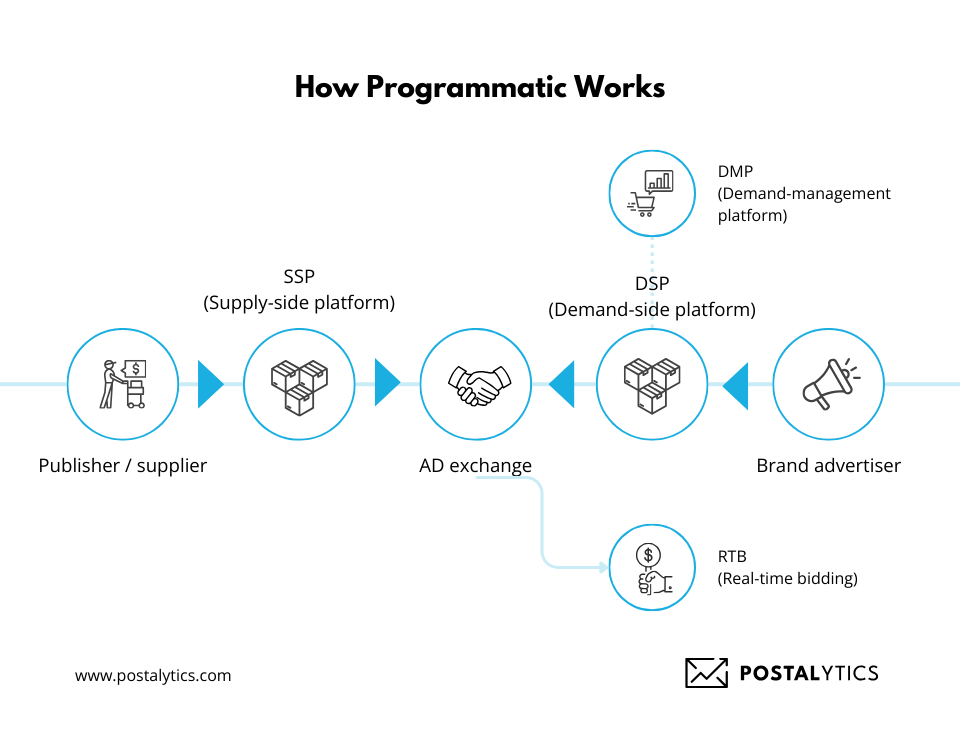
Programmatic advertising uses algorithmic tools and automated technology for ads buying and selling. It analyzes data and user signals to ensure that the ads are showcased to the right user in the right place and at the right time.
The top benefits of this are;
- a wider audience reach
- cost-effective means
- real-time data and analysis
- leverage first and third-party data
- the ability to create a cross-device campaign strategy
The four common types of programmatic advertising are;
- Private marketplace: when publishers have agreements with a limited number of advertisers
- Real-time bidding: ad auctions that are open to all advertisers
- Preferred deals: advertisers choose ad spots before they go on the open market
- Programmatic guaranteed: preferred deals but no auction bidding
There are many platforms for programmatic advertising that help businesses buy ad inventory across an open network of platforms.
Best programmatic advertising platforms: PubMatic, MediaMath, AdRoll
#8 Customer Data Platforms (CDPs)
Do you have multiple spreadsheets for customer data? Managing these spreadsheets can be very tedious. This is especially so when you need to find particular information about your customers.
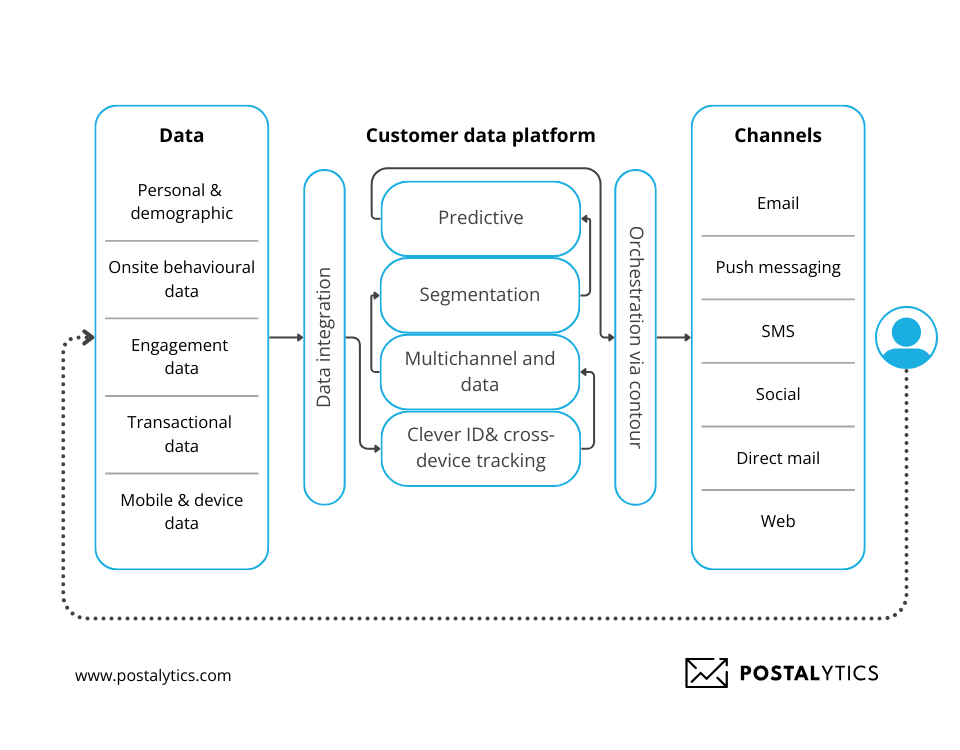
Customer data platforms (CDPs) is a tool that combines data from multiple platforms to create one centralized database. This singular database holds information on all your customers, such as;
- email addresses
- contact details
- behaviors
- interests
- requirements
- date of subscribing
- plans they have subscribed to
Based on this unified data, you can discover patterns, create segments, and send personalized marketing campaigns to your target audience.
Best customer data platforms: Segment, Emarsys, Bloomreach
Effective Strategies for Targeted Marketing
You have a list of platforms and tools ready for your internet service campaigns. Now, it’s time to find strategies and approaches to help you carry out targeted marketing.
Here are the top 5 strategies you can implement.
#1 Segmentation and Personalization
Segmentation and personalization are the key drivers for creating effective targeted marketing campaigns.
Take these two campaign ideas as an example:
Purpose: Informing subscribers about changes to the Internet pricing plans
Campaign A: Sending customized direct mails of different pricing plans to respective subscribers.
Campaign B: Sending a general direct mail to all subscribers.
Which do you think would be more effective? Definitely not B, right? Because why would your “basic plan” subscriber want to know about changes to the “premium plan”? A segmented and personalized approach is better for the following reasons:
- Resonates better with your audience
- Improves campaign performance
- Improves business focus
- Helps make other business decisions
Here are the different types of segmentation you can adopt in your business:
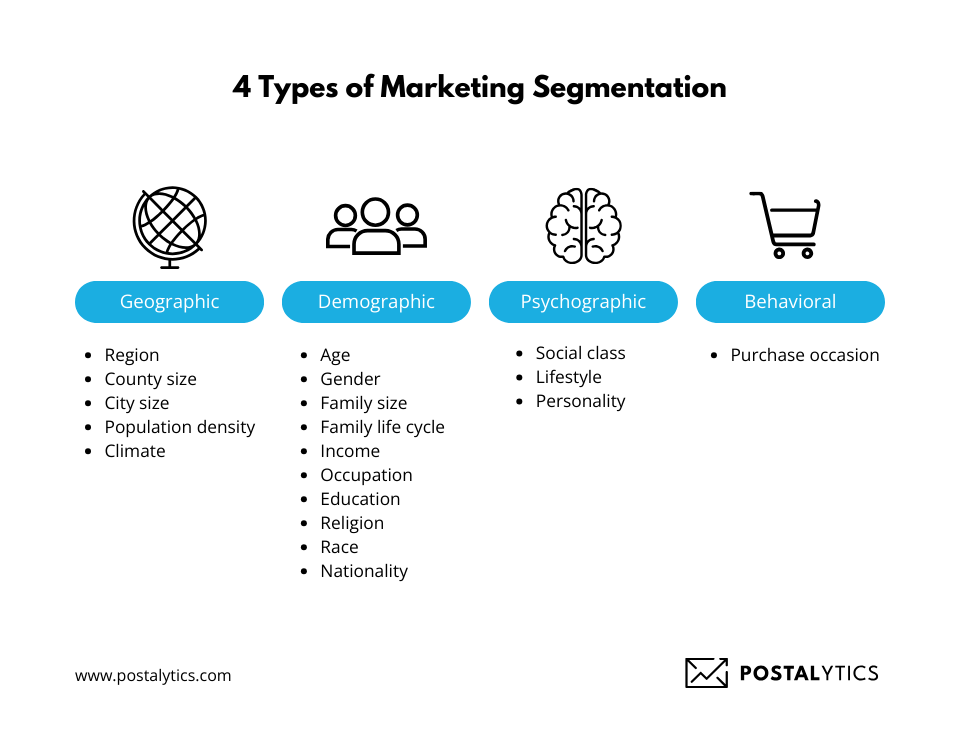
#2 Behavioral Triggers
Do you send the same onboarding email to everyone when they subscribe to your services? Or do you trigger remarketing ads to your audience who almost purchased your product or service?
If so, you can set automated workflows by using behavioral triggers. Behavioral triggers are an automated marketing solution that allows you to set up workflows to respond to certain user actions. For example, if someone subscribes to your newsletter, you can trigger an email sharing your popular blog posts they might be interested in.
These triggers help you deliver the right message to the right person “at the right time.”
You can use these triggers to nurture leads, encourage more purchases, engage your customers, drive loyalty, and boost customer retention.
Read this guide to learn how to implement behavioral triggers and other techniques for your real estate business.
#3 Retargeting and Remarketing
Did you know that only 2% of B2B website visitors convert on their first visit? Instead of waiting for them to decide or flock to your competitor, why not nudge them by sharing a powerful retargeting ad or content?
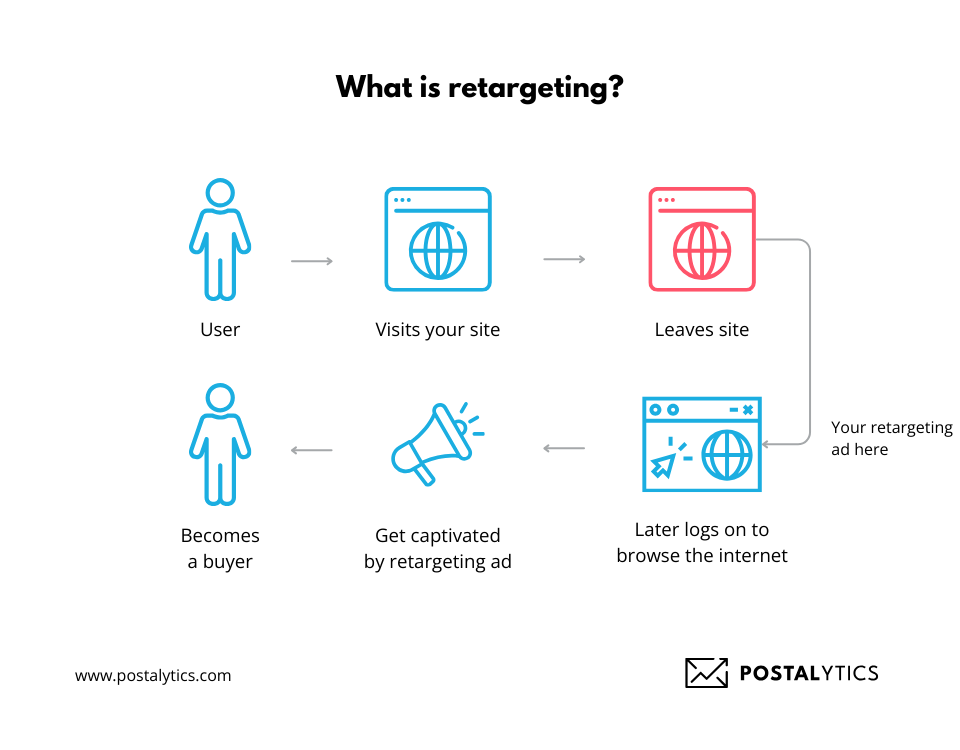
For example, if you have customers who had subscribed to your internet services in the past but have not been active, you can email them about the changes to your services and how you have improved recently.
These retargeting ads are often seen on third-party websites and social media.
Here are four best practices for retargeting:
- Find that perfect number; too few retargeting ads, and your prospect won’t be motivated to purchase. Too many retargeting ads and your prospect will likely mark your emails as spam.
- Have multiple customized ads to target different potential customers. This helps you get higher conversions.
- Don’t try to do too much with your ad, like stuffing a lot of information or trying to promote multiple products at a time.
- Start with one retargeting platform first and then move to others.
#4 Content Personalization
You could share the same content with everyone on your list. Or, you could get better responses and engagement by sharing relevant, customized content.
Content personalization is a marketing strategy that refers to tailoring emails, landing pages, and other forms of content to match individual users’ preferences, characteristics, and behaviors.
Here’s what content personalization looks like.
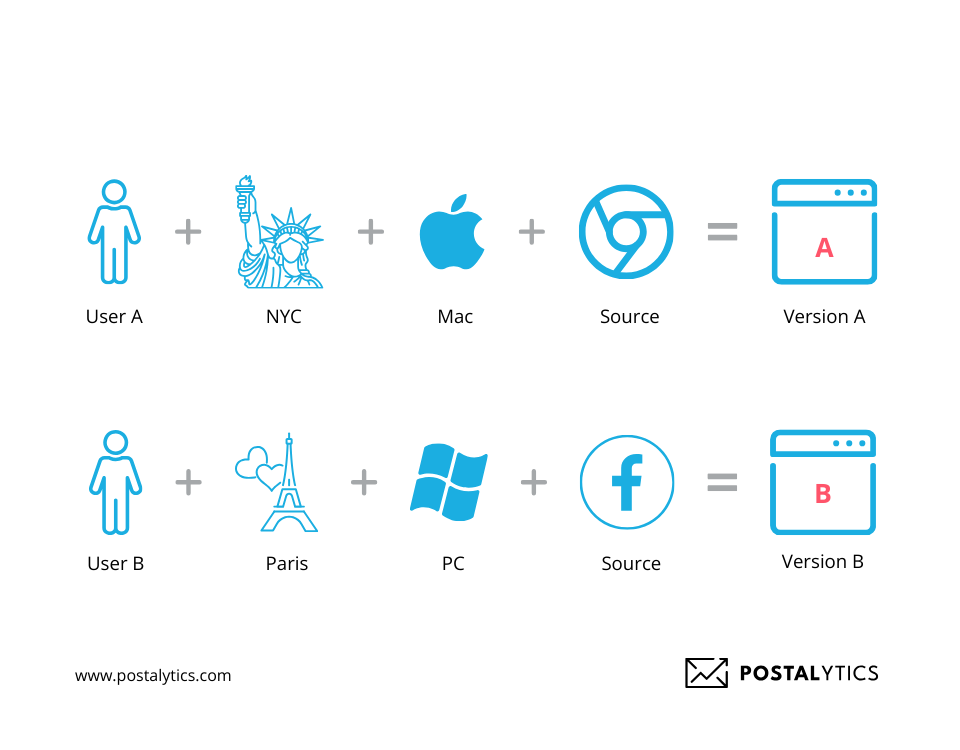
For example, many businesses have variable pricing for different countries. This calls for a personalized pricing page for different locations.
Similarly, you can share upsell and cross-sell recommendations via email based on the customer’s purchase history.
Here are three things you must be careful of while personalizing content:
- Don’t be creepy with your personalization, especially with data you didn’t get the customer’s consent on.
- Don’t use vague or ineffective personalization elements.
- Don’t personalize only when you want to sell something.
#5 A/B Testing and Optimization
Sometimes, you may be stuck with two effective campaign ideas. Instead of relying on your gut feeling, you can adopt A/B testing to find the idea that would resonate the most with your audience.
You can set KPIs to track the success of each campaign and why selecting one over the other would be beneficial. These KPIs could be conversions, open rates, number of QR code scans on direct mail, leads generated, sales made, etc.
Even if you decide against A/B testing, optimize your campaigns regularly. For example, if you find that the campaigns with visuals are getting more results, try experimenting with more visuals for the next campaign.
Achieving Excellence in Targeted Marketing
Targeted marketing is more than a means to generate more leads and revenue. A customer-centric approach to your marketing creates experiences that resonate with your audience.
While many companies have adopted targeted marketing for their PPC ads, internet service providers can take this one step ahead and adopt it in other marketing avenues.
By adopting Postalytics for your direct marketing requirements, you can create, send, and track relevant and personalized direct mails without spending a lot of time and energy.
Get started with a free account today!
About the Author

Dennis Kelly
Dennis Kelly is CEO and co-founder of Postalytics. Dennis joined Boingnet, the predecessor to Postalytics, in 2013. Boingnet was focused on providing print and direct mail marketing service providers the ability to add digital marketing channels to their direct mail campaigns. Postalytics is Dennis’ 6th startup. He has been involved in starting and growing early-stage technology ventures for over 30 years and has held senior management roles at a diverse set of large technology firms including Computer Associates, Palm Inc. and Achieve Healthcare Information Systems.
